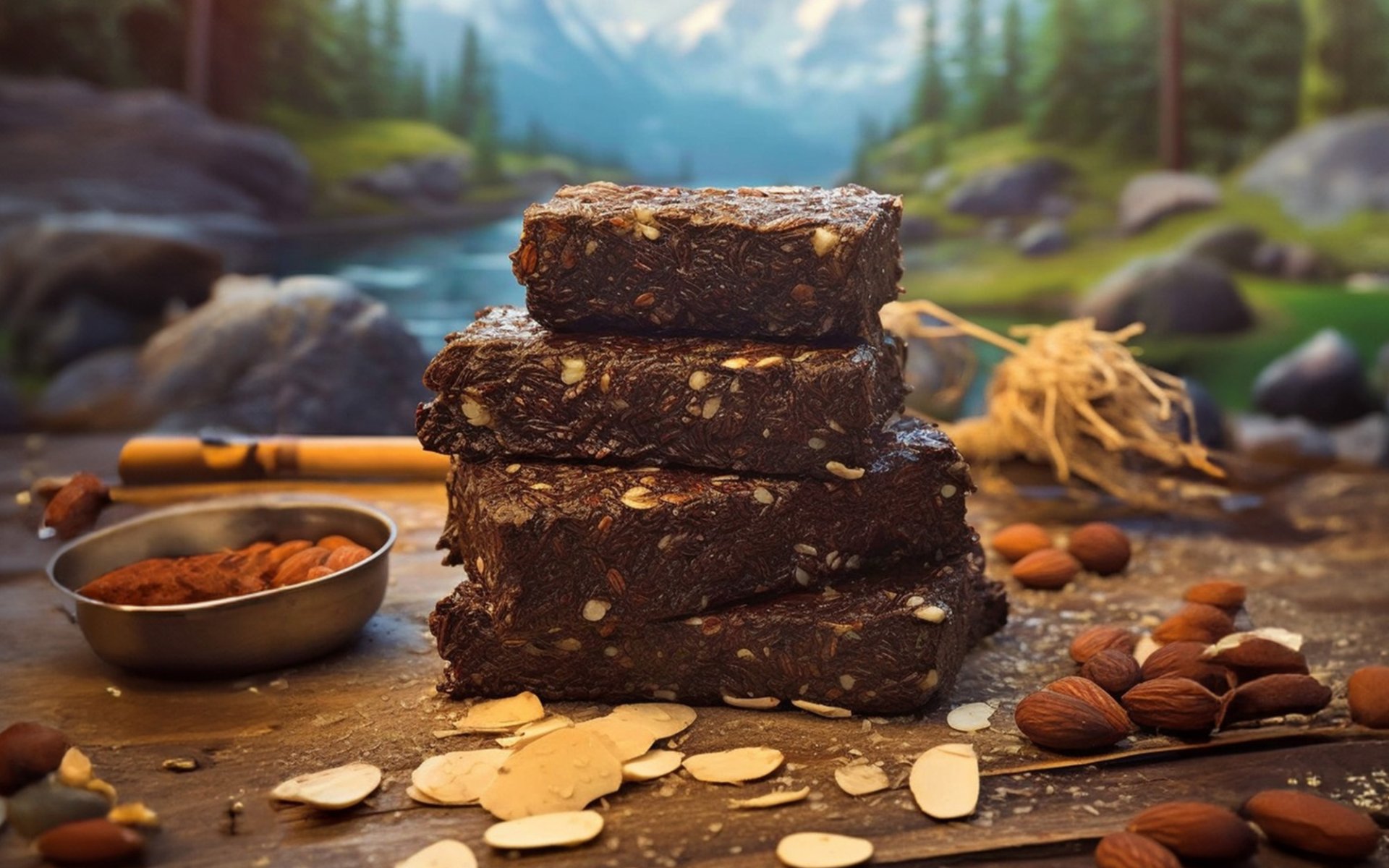Pemmican

Dating back over 50,000 years BC, nomadic tribal humans lived primarily by hunting and did not settle in one place. Therefore, they needed to find food to serve as provisions during their journeys or hunting expeditions. These long journeys required immense energy, which led to the creation of Pemmican, the earliest form of energy supplement known to humanity, conceived for survival.
Traditional Pemmican was made from lean meat from animals like bison, buffalo, deer, or moose. The meat was cut into small pieces, dried until rigid, then pounded into a powder-like consistency. This powder was then mixed with rendered animal fat (tallow) and pressed into cakes or bars, serving as highly concentrated and portable provisions for long journeys, convenient in all weather conditions.
In later eras, Pemmican was further developed by indigenous tribes in North America, adapting it to local resources and traditions. They added various fruits and vegetables, such as berries, cherries, blueberries, dried fruits, and a variety of nuts, to enhance its flavor, nutritional value, and overall diversity.
The Origin of the Name Pemmican and Its Key Properties
The word Pemmican comes from Pimihkan in the language of the Cree people, one of the earliest indigenous tribes inhabiting Canada. It means manufactured grease, directly referring to Pemmican's distinctive sticky texture and its ability to be preserved for many years when stored properly. Its high fat content was crucial for preserving the meat from spoilage.
Significant Cultural, Economic, and Trade Roles
In those times, Pemmican was an extremely vital energy source for indigenous tribes who frequently traveled for hunting or migration, as well as for fur traders and explorers in North America. Its long shelf life and its rich concentration of calories, protein, and fat made it indispensable during harsh winters when fresh food was scarce. Consequently, Pemmican became central to the food and culture of North American indigenous tribes and a key to their survival.
Furthermore, Pemmican played a significant role in trade among indigenous tribes. It became a valuable commodity, often exchanged for other goods such as furs, tools, and clothing. This trade network helped connect distant indigenous communities, fostering the exchange of cultural knowledge, goods, and establishing broader inter-tribal relationships.
Changes in the European Era and the Decline of Wildlife Populations
In the 16th century, as Europeans arrived in North America, Pemmican began to gain popularity among European explorers and hunters. They quickly recognized the importance of this energy source, as Pemmican was an ideal food for long and arduous journeys into unfamiliar territories where carrying fresh food was impractical.
During the 19th century, Pemmican's popularity surged dramatically, leading to its large-scale trade and production by indigenous tribes to meet European demand. This trade played a significant role in the economic development of the region. However, with increased production came intensified hunting for raw materials. Consequently, the populations of key wild animals such as buffalo, bison, and deer began to decline alarmingly, eventually leading to a reduction in Pemmican production and consumption.
Pemmican in the Modern Era: The Resurgence of an Ancient Energy Bar
In the modern era, Pemmican has been adapted, now utilizing beef or other more readily available and sustainable meats instead of wild game. It has seen a resurgence in popularity as a highly nutritious food, attracting significant interest from health-conscious individuals who favor high-protein, high-fat diets (low-carb, high-fat diets). It has also become popular among outdoor enthusiasts and those seeking a highly energetic and portable food for hiking, climbing, or camping.
Pemmican is more than just an ancient energy bar; it is a testament to human survival, adaptation, and intelligent resource utilization, continuing to be a reliable and popular energy source to this day.


